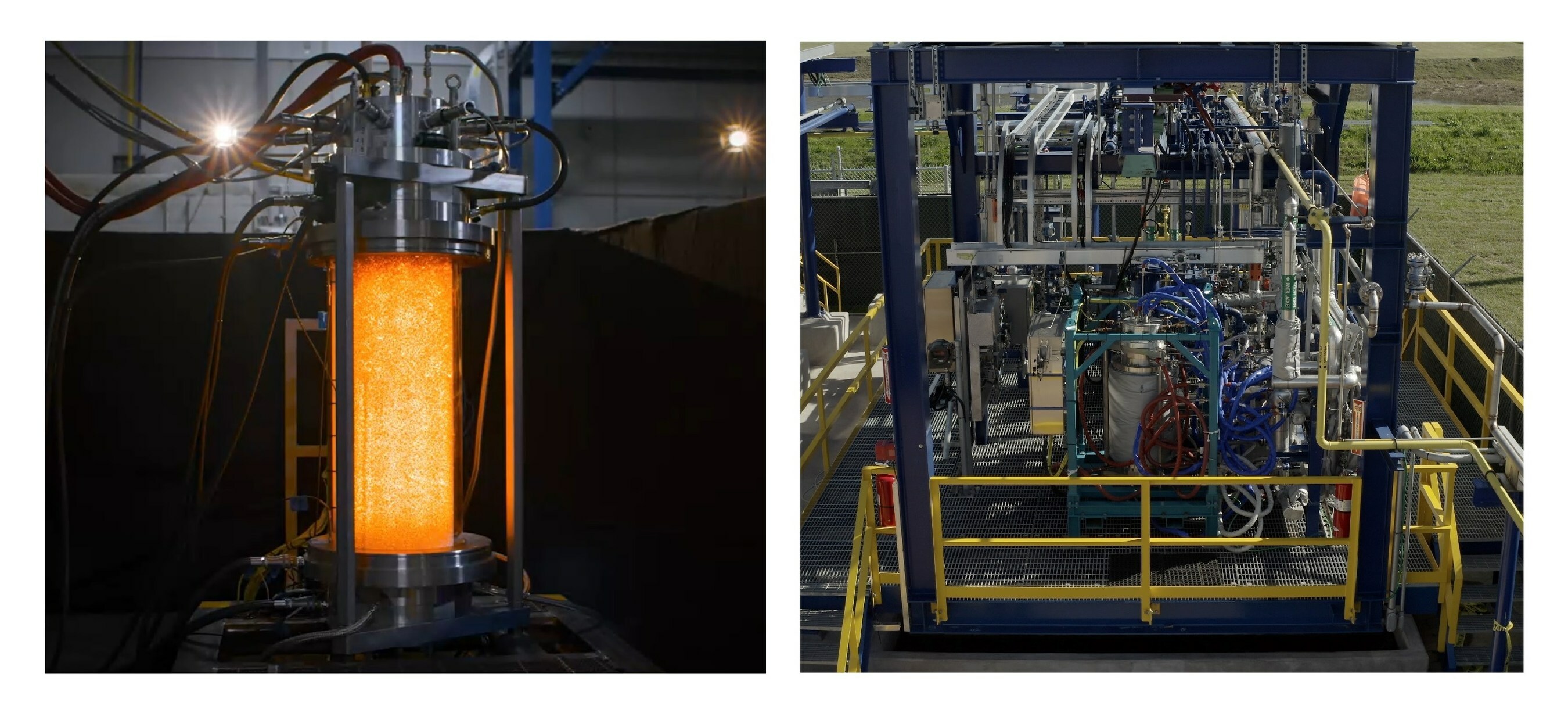Syzygy Plasmonics Announces its Industrial Ammonia e-Cracking Cell Passes Qualification Testing and is Available for Order, Produces Hydrogen from Ammonia and Light
Published by Todd Bush on January 26, 2024
HOUSTON, Jan. 25, 2024 /PRNewswire/ -- Syzygy Plasmonics announced today that the world's first light-powered reactor cell for industrial chemical reactions has met initial performance targets and is now available for order in stacks designed to produce up to 5 tons of hydrogen per day. Syzygy has completed more than 1,500 hours of testing of its Rigel™ cell to produce hydrogen from ammonia. Testing of the first-of-a-kind 200 kg/d light-powered ammonia e-cracking cell began in late 2023 and is ongoing.

First of its kind 200 kg/d light-powered ammonia e-cracker passes 1,500 hours of testing and is actively producing hydrogen. 5 tons-per-day hydrogen systems are available for order.
Climate goals in energy importing regions like Asia and Central Europe are forcing importers of liquified natural gas (LNG) to look for lower-carbon energy carriers. Many of them are turning to low-carbon ammonia as a solution. A portion of that imported ammonia will be cracked to produce hydrogen for hard-to-abate sectors like power generation and steel production. Conventional thermal ammonia cracking is energy intensive and emits NOx when ammonia is burned as part of the process.
Syzygy has pioneered a new technology that harnesses the energy from ultra-high efficiency artificial lighting to e-crack ammonia, removing the need for combustion. When powered by renewable electricity, Rigel cell stacks are designed to deliver no-NOx hydrogen from low-carbon ammonia.
"The testing at our Houston facility is going exceptionally well," said Syzygy CEO Trevor Best. "We're ready to deliver 5-tons-of-hydrogen-per-day projects today. In 2025 we'll be ready for 10-ton installations, and then for 100-ton projects in late 2026."
With strong initial results, Syzygy has the data points needed to enter the market. These results also show a strong path forward to continue achieving even greater efficiency and performance in future reactor cell designs. Syzygy is establishing a strong efficiency baseline at the reactor cell level and adding the energy required for balance of plant equipment and processes to determine overall system efficiencies. Including the energy required for an entire e-ammonia cracking plant, test results show that Syzygy technology should be able to produce hydrogen using only 12 kWh/kg in 2025. In 2026, the product roadmap calls for reducing that further to just 10 kWh/kg, further improving efficiency and operating costs.
About Syzygy Plasmonics
Syzygy Plasmonics is a deep-decarbonization company. It builds reactor cells that use light instead of combustion to electrify chemical manufacturing and power a cleaner, safer world. Syzygy is commercializing a universal photocatalytic reactor platform designed to consume greenhouse gases and produce low-carbon hydrogen. When powered with renewable electricity, this tunable technology is designed to reduce both cost and emissions from many different chemical reactions. The company's mission is to create a world where chemicals, fuels, and fertilizer are low cost, carbon neutral, and accessible to everyone. For more information visit plasmonics.tech.
Claims have not been independently verified.
SOURCE Syzygy Plasmonics
Subscribe to the newsletter
Daily decarbonization data and news delivered to your inbox
Follow the money flow of climate, technology, and energy investments to uncover new opportunities and jobs.
Latest issues
-
SAF Output Doubled, So Why Is IATA Sounding Alarms?
Happy New Year from Decarbonfuse! As we wrap up 2025, we want to thank you for being part of the growing Decarbonfuse community. Your engagement and feedback have helped make this platform a trust...
-
$213 Per Tonne: Inside the Latest Multi-Pathway CDR Deal
Inside This Issue 💸 $213 Per Tonne: Inside the Latest Multi-Pathway CDR Deal 🏛️ Clean Energy Technologies Affiliate Vermont Renewable Gas Advances Regulatory Review 💧 Fusion Fuel’s BrightHy Soluti...
-
The Three-Continent Move That Redefines SAF
Wishing everyone a restful holiday season.🎄🎅🎁 Inside this Issue ✈️ Cathay Goes Global With SAF in Three-Continent Fuel Deal 🧪 Proton Ventures Partners With Barents Blue For Realization Of The Bar...
Company Announcements
-
HyOrc Completes Factory Acceptance Test of 500kW ORC Turbine for International Customer
HOUSTON, Dec. 31, 2025 (GLOBE NEWSWIRE) -- HyOrc Corporation (OTCID: HYOR), a clean-energy technology company, today announced the successful completion of the Factory Acceptance Test (FAT) for its...
-
Nova Sustainable Fuels Receives Approval to Produce Sustainable Aviation Fuel in Guysborough County
Nova Sustainable Fuels has received environmental assessment approval for the first phase of a project that will see the company develop a renewable energy park in Goldboro, Guysborough County, whe...
-
Darling Ingredients Announces Sale of Approximately $50 Million in Production Tax Credits
IRVING, Texas -- Darling Ingredients Inc. (NYSE: DAR) today announced the sale of approximately $50 million of production tax credits to a corporate buyer. These credits were generated under the In...
-
Aemetis Receives Funds From the Sale of $17 Million of Federal Clean Energy Tax Credits
CUPERTINO, Calif., Dec. 30, 2025 (GLOBE NEWSWIRE) -- Aemetis, Inc. (NASDAQ: AMTX), a renewable natural gas and renewable liquid fuels company focused on lower cost and reduced emissions products, t...